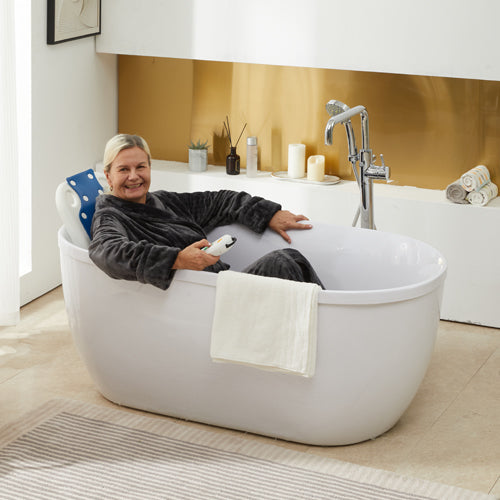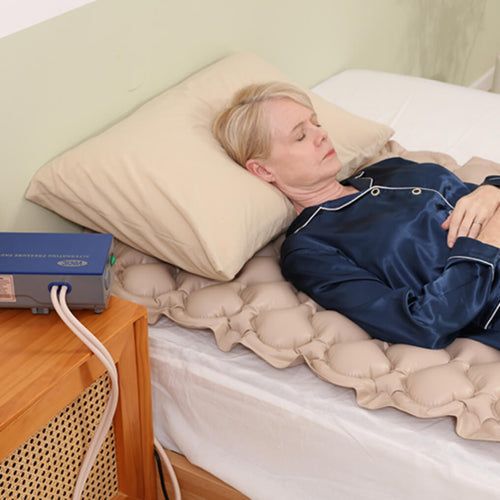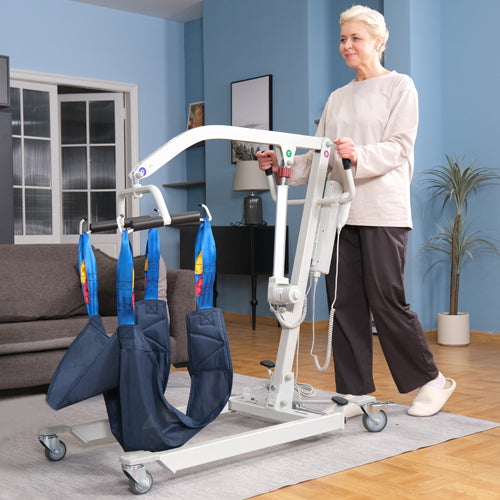When using a fingertip pulse oximeter, if you are new to it, it can be a bit confusing to understand how to read the results. Therefore, I have written a dedicated article on how to use it so that you can use it simply and correctly interpret the numbers on the pulse oximeter so that you can have a better experience using this health tool.
What Is a Fingertip Pulse Oximeter?
A fingertip pulse oximeter is a small, handy device that you clip onto your finger and measures oxygen delivery to the parts of the body furthest from the heart, such as the arms and legs. It works by shining light onto your fingertips to check how much oxygen is in your blood, as well as your heart rate.
It's perfect for users who want to monitor their oxygen levels at all times, especially if they have medical conditions like asthma or COPD, or if you're a big fan of sports and fitness. It's quick and painless, taking only seconds to perform, and there's no hassle!
Who Needs to Use a Pulse Oximeter?
A pulse oximeter is a great tool for anyone who needs to keep a close eye on the oxygen levels in their blood. It is useful for people with respiratory or heart conditions, such as COPD, asthma, or heart failure, as it helps them monitor their health anytime, anywhere. In addition, some athletes find it convenient to use an oximeter to check oxygen levels in low-oxygen environments. Therefore, a pulse oximeter not only lets you know if you need to seek medical help but also allows you to better manage your health conditions or stay healthy.
How to Use a Fingertip Pulse Oximeter?
Using a fingertip pulse oximeter is simple and convenient. It allows you to use it quickly. Here is a simple guide to using a fingertip pulse oximeter:
-
Prepare the Device: Before you start measuring, it is recommended that you check that the pulse oximeter is working properly and that the battery is fresh. So, you need to make sure everything is in working order.
-
Prepare the Finger: A quick cleanse of your finger and a slight warming will give you the most accurate reading. It is also recommended to remove nail polish or fake nails as they can affect the results.
-
Insert the Finger: Place your index finger in the oximeter clip. Make sure it is fully inserted and firmly in place, with the tip of your finger touching the end.
-
Start the Measurement: Press the button to start the measurement, and try to keep both you and your finger still; moving around can affect accuracy. The pulse oximeter takes about 10 seconds to get a stable reading.
-
Read the Results: Check the display to see your blood oxygen saturation (SpO2) and heart rate. Remember that a normal SpO2 is between 95% and 100%, but your heart rate may vary.
-
Record the Results: Write down your numbers if you need to track them or share them with your doctor, especially if you are monitoring a specific health condition.
-
Turn off and Store: When finished, remove the finger, turn off the device to save the battery, and place the pulse oximeter in a safe place and away from sunlight or moisture to dry.
Understanding each step can help you better use the fingertip pulse oximeter. Following these steps will help you accurately monitor your oxygen levels.

What Factors Affect the Pulse Oximeter Results?
In order to ensure that the pulse oximeter readings are correct, we need to understand what factors can affect it so that we can avoid these factors. Here are some of the main factors that may affect the pulse oximeter results:
-
Blood Flow: If your fingers don’t have good blood flow (like if it’s cold or your circulation is poor), it can affect the pulse oximeter’s ability to get an accurate reading.
-
Nail Problems: Dark nail polish or fake nails can block the light sensor in the pulse oximeter, causing inaccurate oxygen readings.
-
Movement and Stability: Moving or shaking your finger during a measurement can affect the result. Keeping your finger still will give you the most accurate data.
-
Carbon Monoxide Poisoning: If you’ve been exposed to carbon monoxide, it can bind to your hemoglobin, causing the pulse oximeter to read higher oxygen levels than are actually in your blood.
Understanding these factors allows you to get the most accurate readings from your pulse oximeter.
Where Can You Purchase a Pulse Oximeter?
There are several places you can buy a pulse oximeter:
-
Drugstores: Your local drugstore, such as CVS, Walgreens, or Rite Aid, will have pulse oximeters in their health or medical supply section. So, you can go directly to the drugstore to buy one.
-
Medical Supply Stores: If you want more pulse oximeter options, physical and online medical supply stores are a good choice, and they offer a variety of pulse oximeters, including some high-end models.
-
Online Retailers: Websites like VOCIC are a great place to find pulse oximeters. For example, VOCIC's AT10 FDA-Cleared Fingertip Pulse Oximeter. So, you can compare different models, read reviews, and then they'll deliver directly to your door.
-
Healthcare Providers: Some doctors or clinics may also sell pulse oximeters directly, especially if you need a specific type of pulse oximeter for health reasons.
-
Specialty Health Stores: Stores that specialize in health and wellness products will generally stock pulse oximeters as well as other fitness and medical equipment. So, you can also ask them to buy one.
Each option provides you with a different way to find the pulse oximeter that suits your needs. So if you don't want to go out or you want to learn more about pulse oximeter product comparisons, you can learn about it on the VOCIC website. It can help you learn more about pulse oximeters and choose the most suitable pulse oximeter for you.

Conclusion
Reading a fingertip pulse oximeter is simple once you know how to use it. Once you wear the device on your finger, it displays two key numbers: blood oxygen saturation (SpO2) and heart rate. The SpO2 percentage shows how much oxygen your blood has, with a normal range of 95% to 100%. Heart rate is displayed in beats per minute (BPM). By knowing these numbers, you can easily monitor your oxygen levels and heart rate to keep track of your health.
In addition, VOCIC also provides a range of mobility aids, including rolled walkers, mobility scooters foldable, wheelchairs, etc. Here, you can not only choose the right pulse oximeter for the elderly in your home, but also the most suitable scooter for the elderly. For more information, please consult the VOCIC website
Related Reading: 5 Best Rollator Walkers with Seats of 2024









